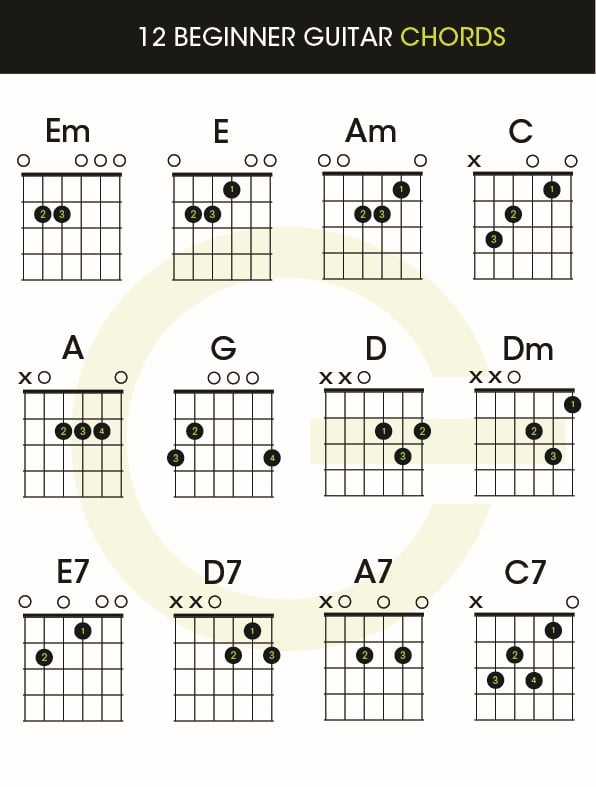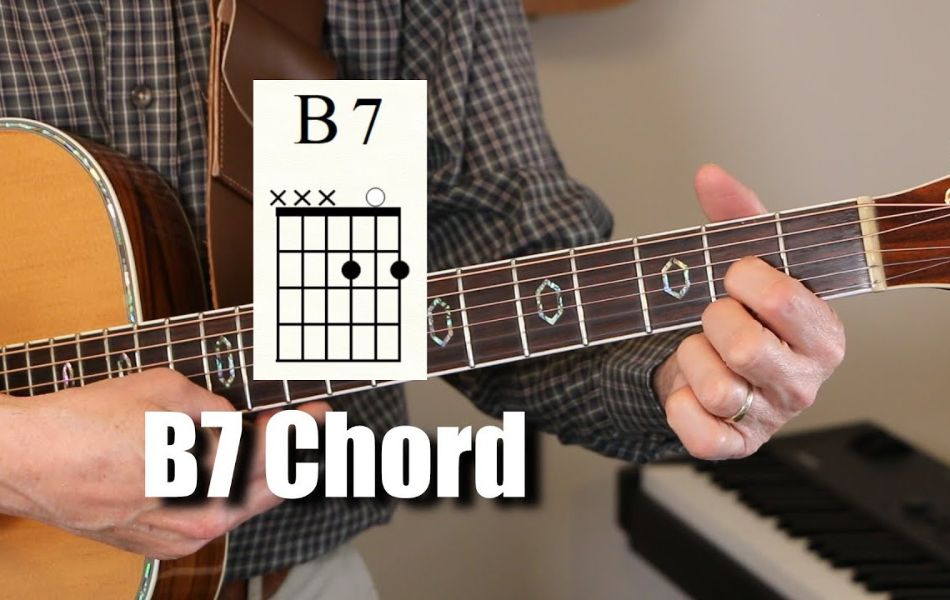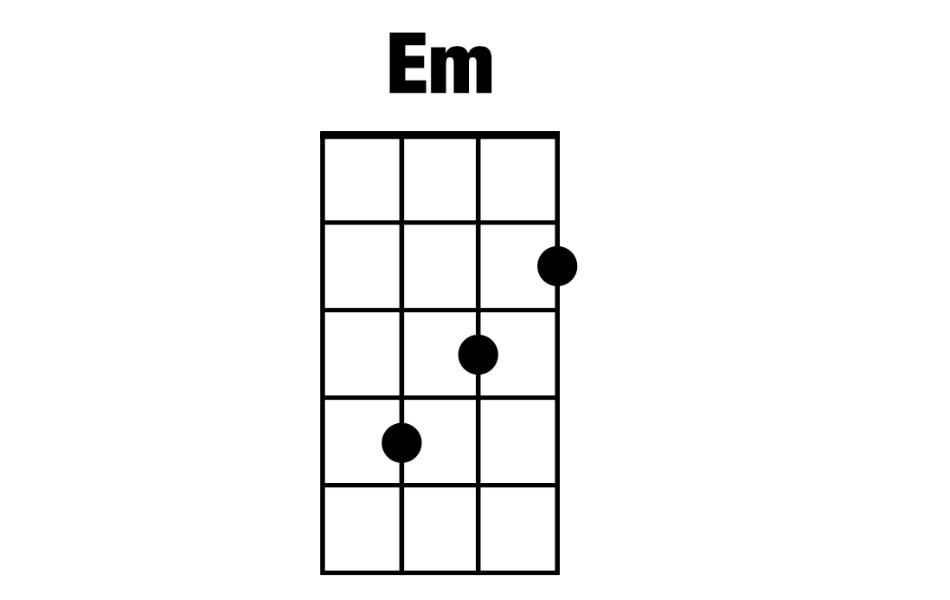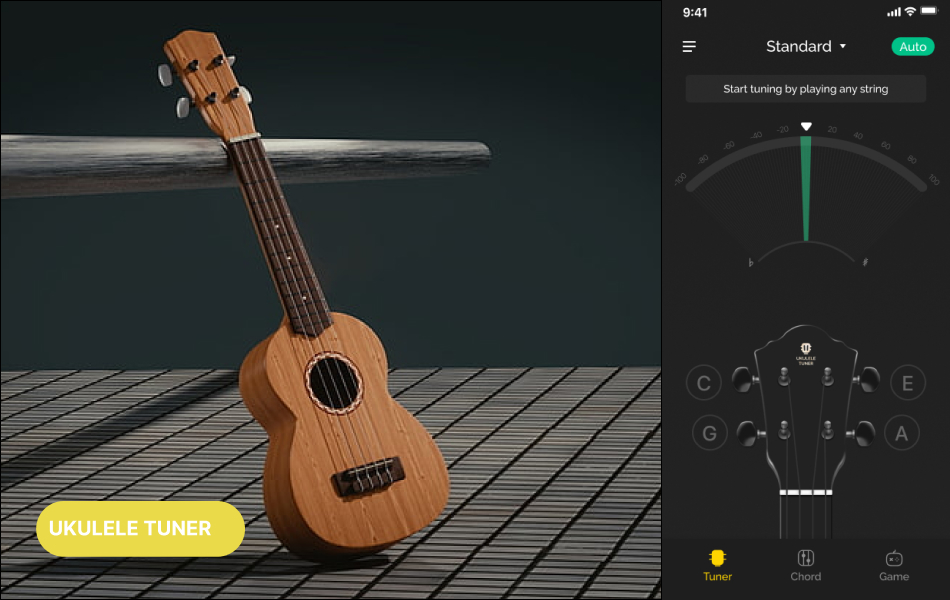Fundamental of Guitar Chord Chart
Are you a beginner in the process of learning about the guitar. And you have numerous inquiries regarding the concept of a guitar chord chart? The term "guitar chord chart" is widely recognized in the realm of music and is crucial for anyone who plays the guitar. In the subsequent article, we will provide assistance in gaining a deeper understanding of this term.
What is the guitar chord chart?
Guitar chord chard
A guitar chord chart is a visual representation or diagram that illustrates the finger positions on the guitar fretboard for creating specific chords. It is a tool used by guitar players to quickly reference and learn different chords.
The chart typically displays the frets and strings of the guitar, indicating where to place your fingers to produce a particular chord. Moreover, it may also include chord names, finger numbering, and other symbols to aid in chord formation.
Guitar chord diagrams are invaluable for beginners and experienced players. They provide a visual guide to help learn and play a wide variety of chords.
Basic guitar chord chard
There is no fixed number of guitar chord charts. It can vary depending on factors such as the style of music, the complexity of chords, and individual preferences. Guitar chord diagrams can be created for a wide range of chords, including basic major and minor chords, barre chords, power chords, and jazz chords.
Additionally, it can be tailored to different levels of proficiency, from beginner to advanced players. They can also be specific to various genres such as rock, pop, blues, jazz, country, and classical music.
There are several basic guitar chords that cover commonly used open chords for beginners. Here are a few examples:
Open Major Chords: C Major, D Major, E Major, F Major, G Major, A Major, B Major
Open Minor Chords: A Minor, D Minor, E Minor
Open Seventh Chords: A7, D7, E7, G7
Barre Chords: F Major Barre Chord, B Major Barre Chord, F Minor Barre Chord, B Minor Barre Chord

How to read the guitar chord diagram
Understand the grid
The chart consists of a grid with vertical lines representing the strings and horizontal lines representing the frets. The leftmost vertical line represents the thickest string (usually the low E string). And the rightmost line represents the thinnest string (usually the high E string).
Identify the dots
The dots or circles on the chart indicate where to place your fingers on the fretboard. The numbers inside the dots represent the suggested fingerings for each note.
Read the chord names
At the top or bottom of the chart, you'll find the chord names, which indicate the specific chord.
Understand the numbers and symbols
Alongside the dots, you may encounter numbers or symbols. The numbers represent the suggested fingerings for each note. Common symbols include "X" (do not play that string) and "O" (play that string as an open string without pressing any fret).
Position your fingers
Use the chart to position your fingers on the appropriate frets and strings based on the fingerings indicated by the dots and numbers.

Strum or pluck the strings
Once your fingers are in the correct positions, strum or pluck the strings to produce the desired chord sound.
After gaining a better understanding of the guitar chord chart, you now have the opportunity to learn guitar at home without enrolling in courses. To enhance your learning experience, I recommend using the Guitar Tunio app. It serves as an excellent tuning tool and provides valuable resources for your musical journey. With this app, you can fine-tune your guitar and explore a variety of features that will support your passion for music. Enjoy your musical pursuits and have fun on your guitar-learning journey!








